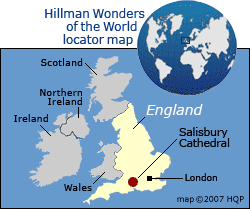Hello everyone!
The United Kingdom is an island that is not connected to mainland Europe. Within its boundaries there is a main island, but there are also smaller islands under Westminster's jurisdiction. One of these is an island to the south called the Isle of Wight, and this was our next stop.

The island is within five miles of the south coast of England, so it is a short ferry ride to get there. Many people take their cars, but we opted to leave our bird-poo-stained Meriva behind in Portsmouth. To be a walk-on passenger is £16 return, but to take your car is £65. Significant. It isn't a particularly large island, and you can access most areas on buses, so there was little need for our monster truck.


The Isle of Wight is traditionally known as a Victorian holiday hotspot and, more recently, a large retirement island, and there were a significant number of elder citizens milling around the centre of the town we were staying in. Perhaps due to its clientele, the island is relatively expensive, especially when looking for accommodation. We ended up staying upstairs in a pub, and got lucky that the price had been slashed in half for that day to a mere £50.


We were staying on the north side of the island in a town called Cowes, which became the theme of many terrible jokes during our time here. Cowes becomes the focal point of the sailing world for a week in August, when Cowes Week sees ships of all shapes and sizes descending on its small port for largest sailing regatta of its kind in the world. We were a month early, but the Solent was still heaving with boats.


We had very little time here, but wanted to explore as much as possible. Our first afternoon was spent getting buses down to the far southwesterly tip of the island to find one of its natural attractions - the Needles. These are a row of three distinctive stacks of chalk that rise out of the sea, with a lighthouse at their far end. They were featured on a British TV programme as one of the natural wonders of southern England. They are intriguing, but not as spectacular as other natural places such as Durdle Door.


We had arrived on a Sunday and the Isle of Wight, like much of Britain, runs a reduced public transport service on Sundays. As a result we arrived at the Needles and its small theme park on the final bus visiting the area that day. With hindsight, we shouldn't have gone on a Sunday. The park wasn't open. The old Needles battery wasn't open. Luckily, the natural world is generally an open place so we were able to walk along the headland to get a sight of the rocks and the shore. On the way we walked past a garden with numerous quirky signs and gnomes. A Japanese duo walked through it to give it a closer inspection, but were given short shrift by an old lady who told them off for trespassing on her 'private property'. Bit strange.


Missing the bus meant we had to walk back to the nearest village to find another route home, in which time we could appreciate the beauty of the countryside. We walked past a very large herd of cows that seemed to moo louder when I took photos, and then a herd of Chinese tourists walking down towards the Needles as the sun was slowly descending. Quite how they were planning on getting back I had no idea.


We had seen more tourists elsewhere on our trip, but I was surprised once again by the number of German speakers we encountered. It may have seemed like a lot because Kristina pointed out each and every one. The strange thing about the Isle of Wight, however, was the number of foreign teenagers who were omnipresent. A gaggle of high-pitched foreign accents punctured the ambience of our bus ride around the east of the island. I can only assume they were there on some sort of school-related activity. Unless the Germans are planning another invasion...

Rowdy teenagers were one of the few aspects of society not covered by the model village in the picturesque village of Godshill. The model is 1/10 the size of the actual village, before expanding to encompass more of the island. There are dinosaurs on trains, men playing bowls, and female strippers on football pitches. Larger than life, this place.



One shop is was missing was nextdoor; the wonderful Chocolate Island. It was heavenly. The only reasons we spent less than £10 were due to insufficient funds and insufficient protection for the chocolate in the scorching sunshine. Lovingly described as the island's 'sweetest attraction', chocolates of all shapes, flavours and sizes were on display. As well as traditional favourites there were some rather eccentric flavours - garlic chocolate, anyone?


It would have been nice to stay longer on the Isle of Wight, but you need a decent amount of money in your pocket to do that. Besides, we had plenty more to see on the mainland; in particular, the gay capital of the UK...

Love you all
Matt




























